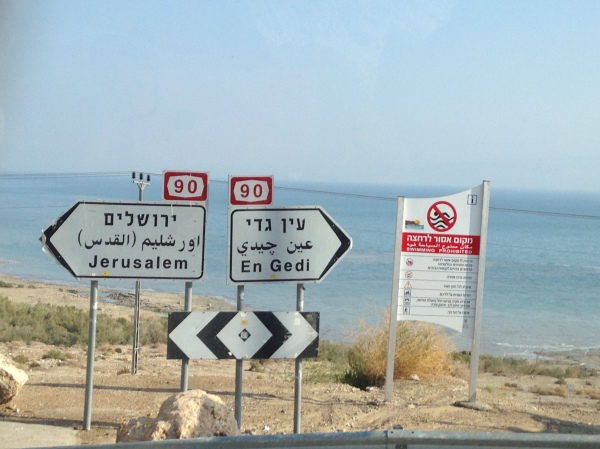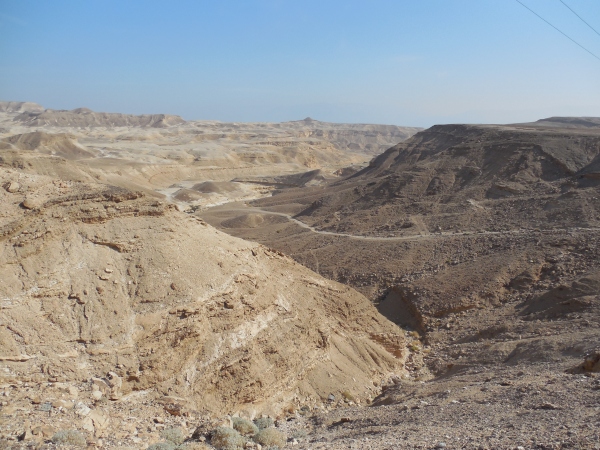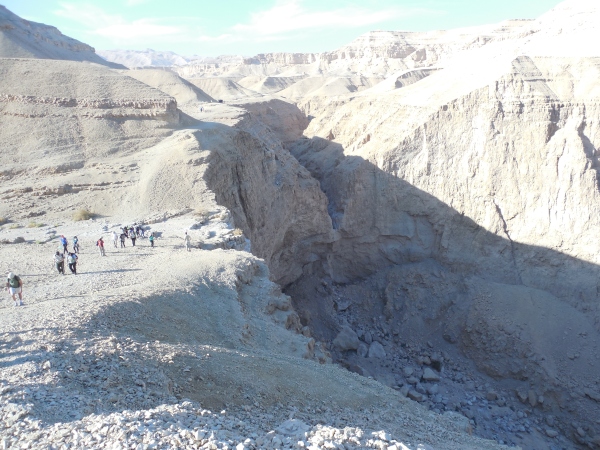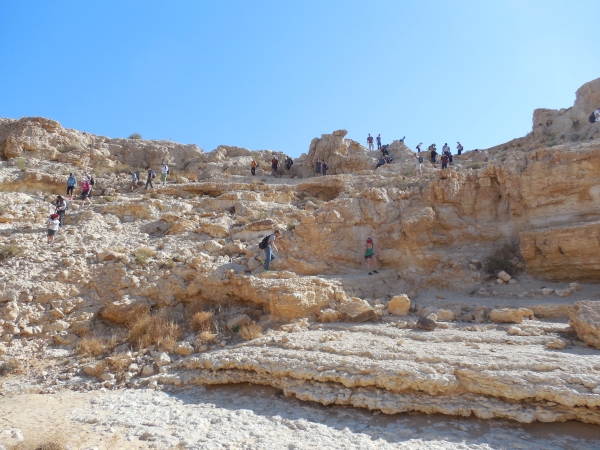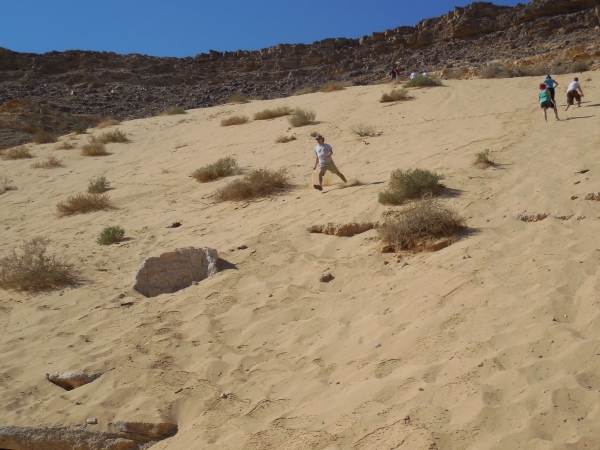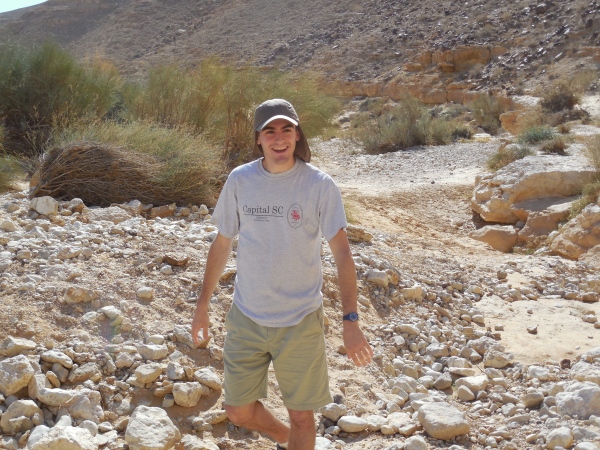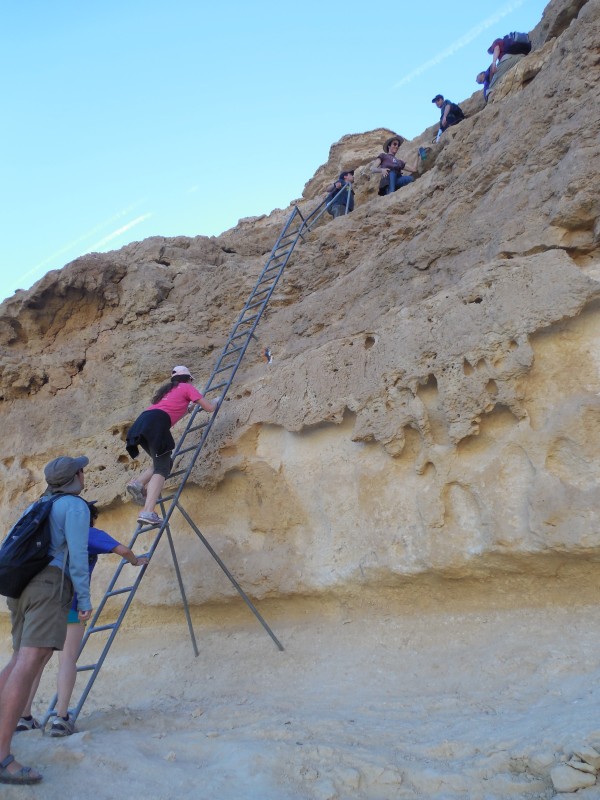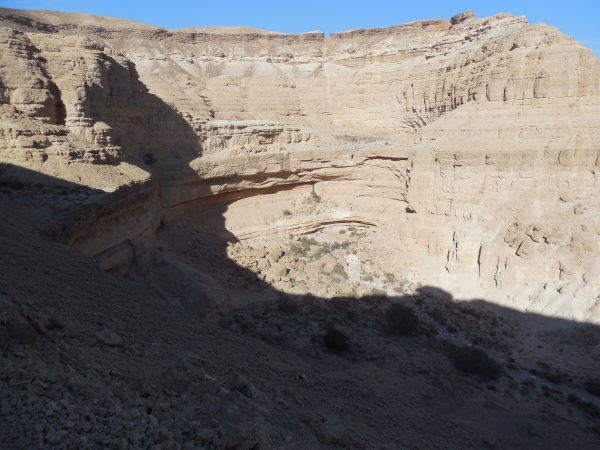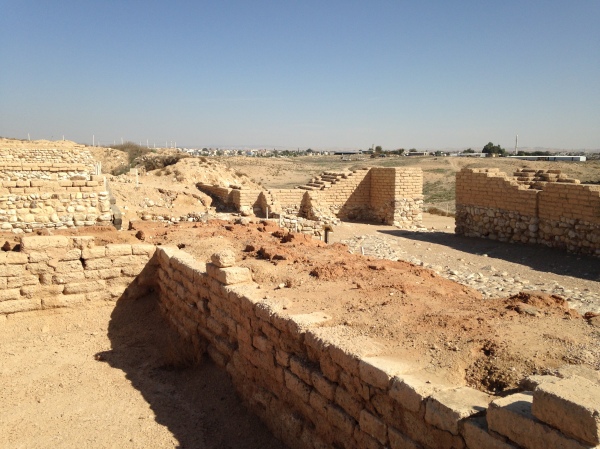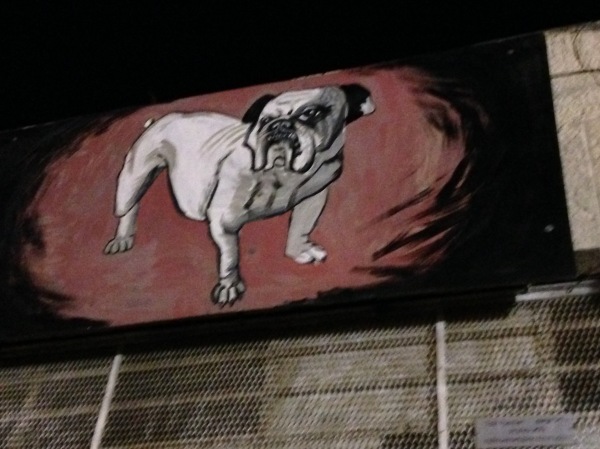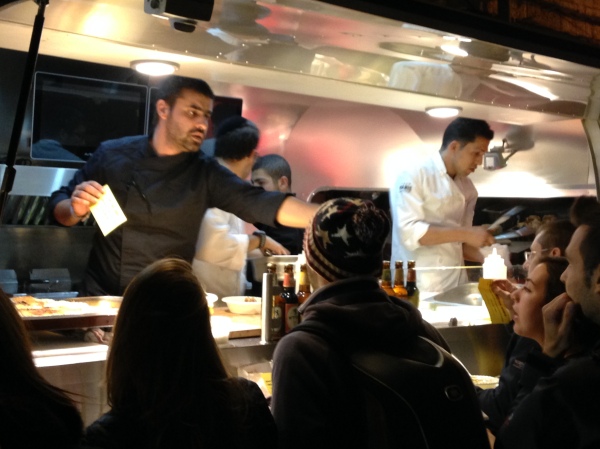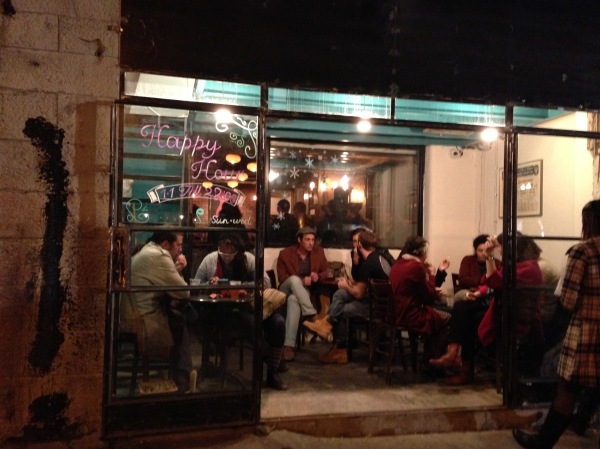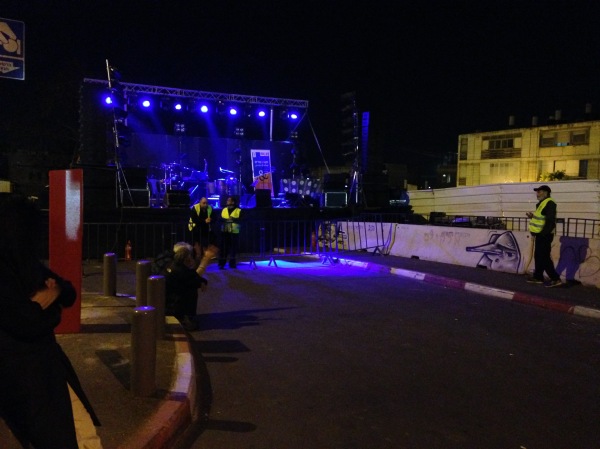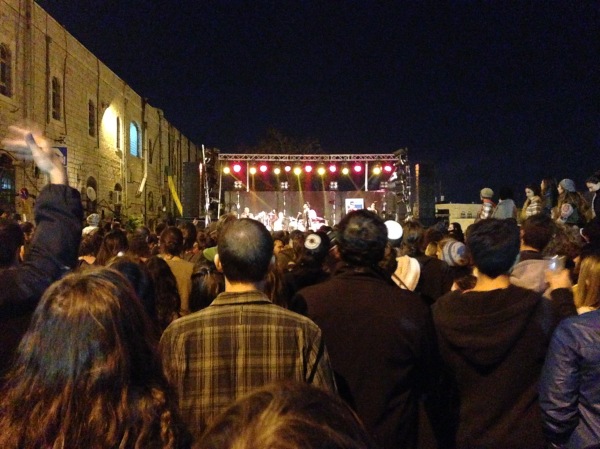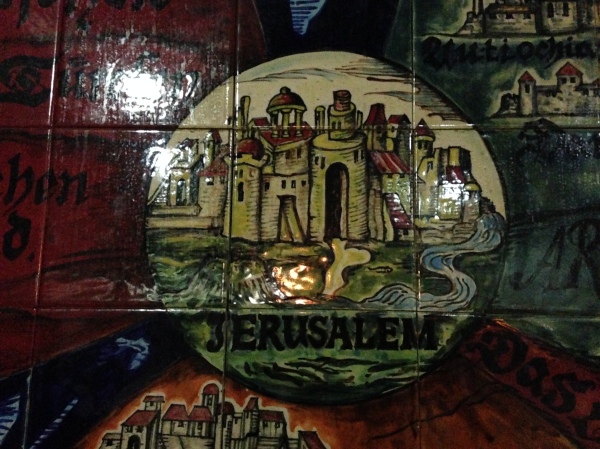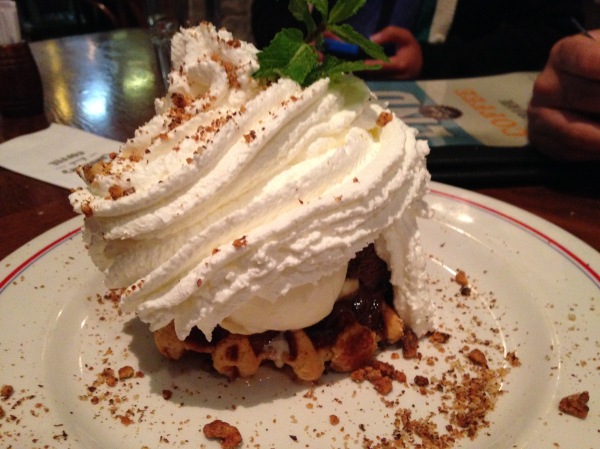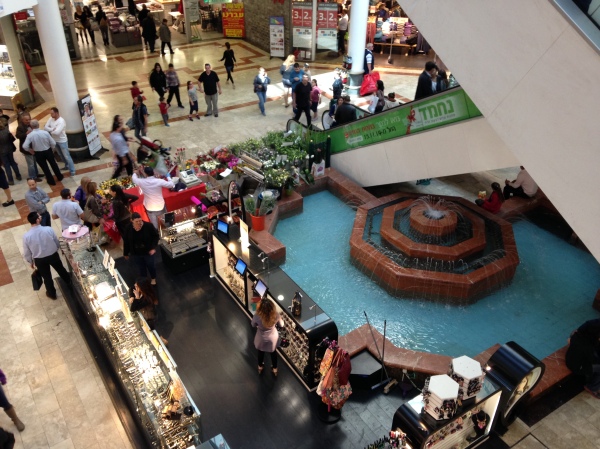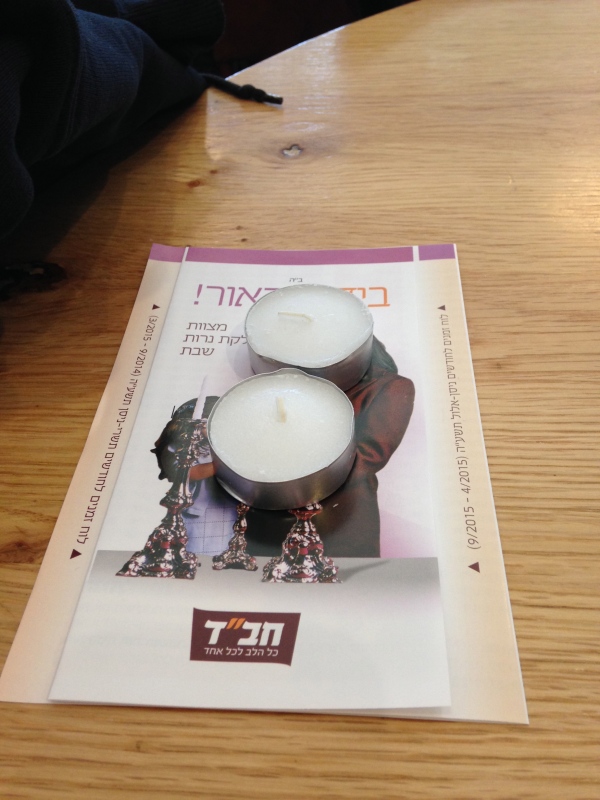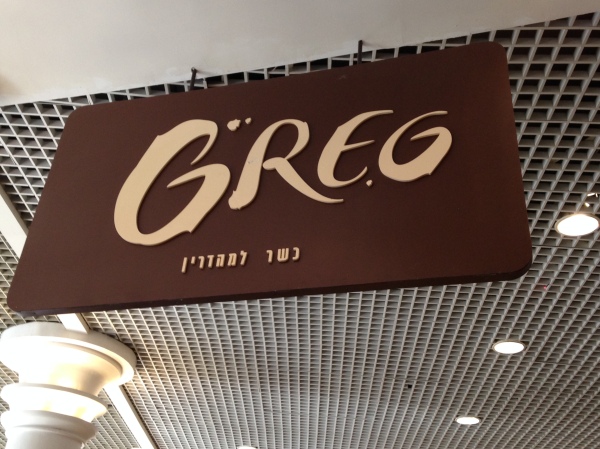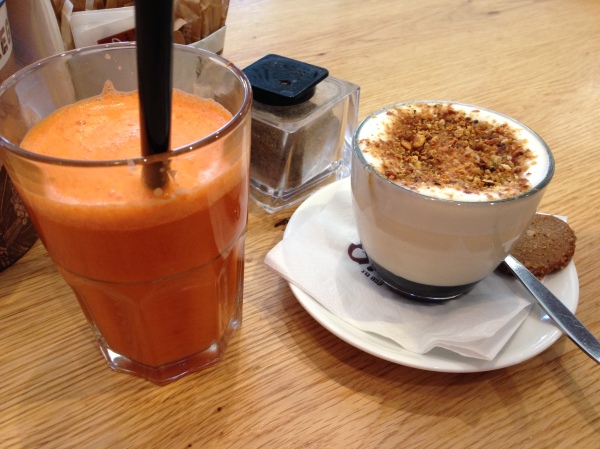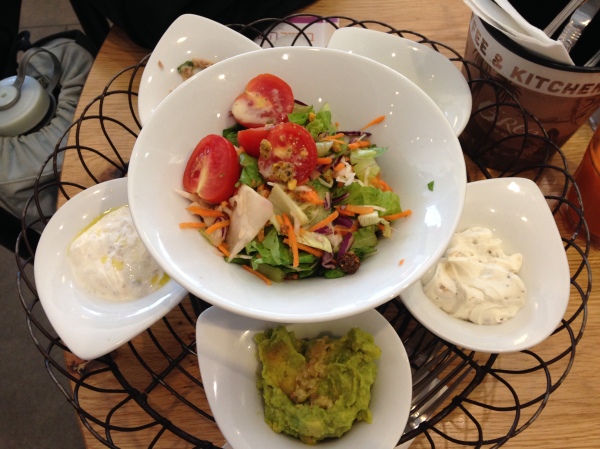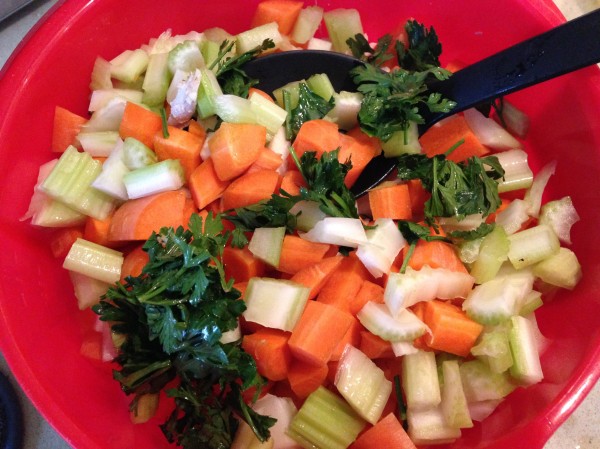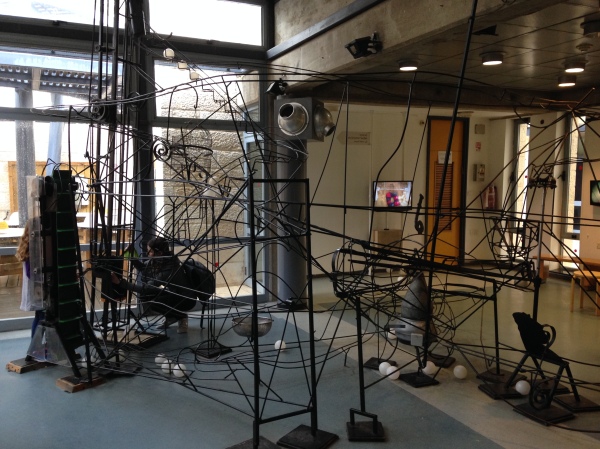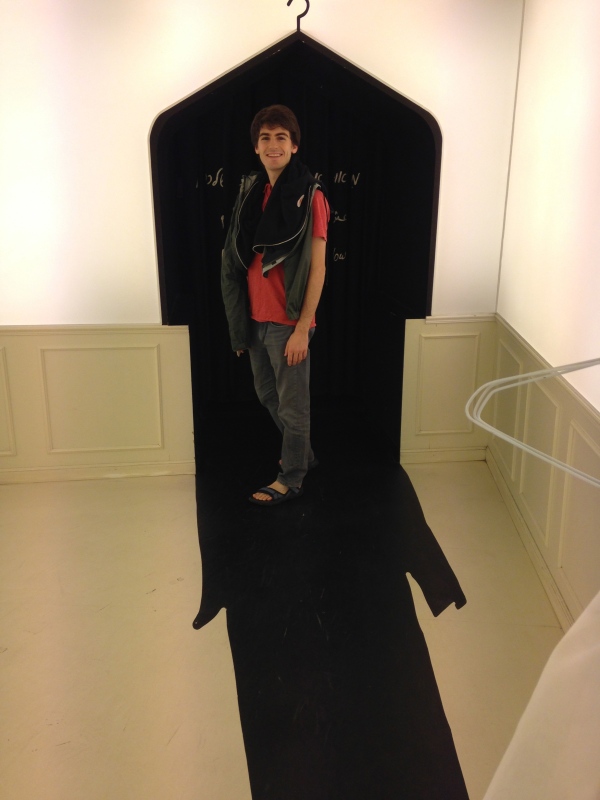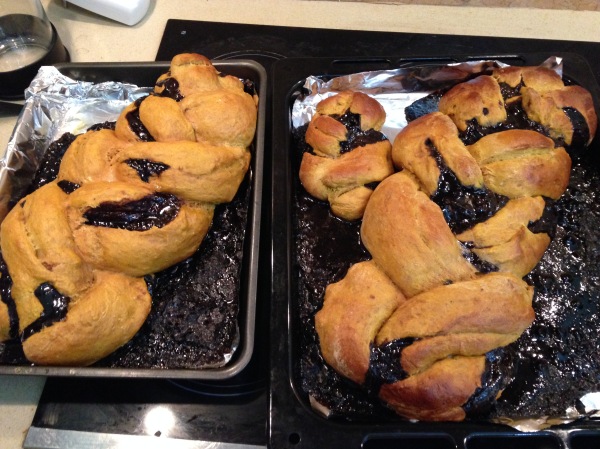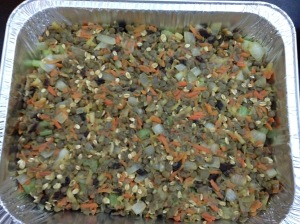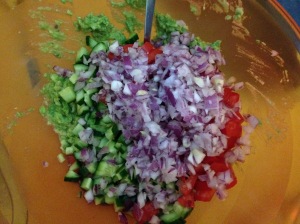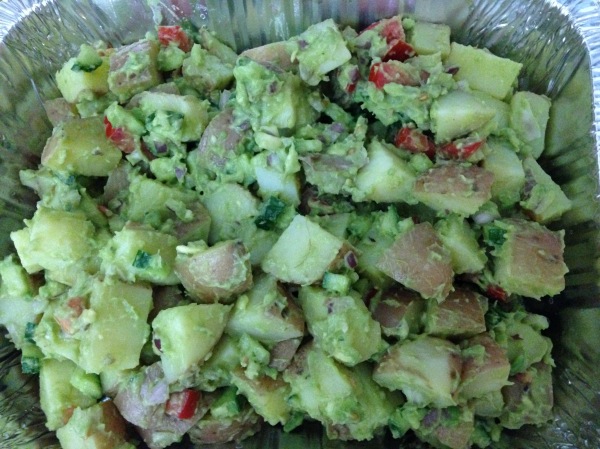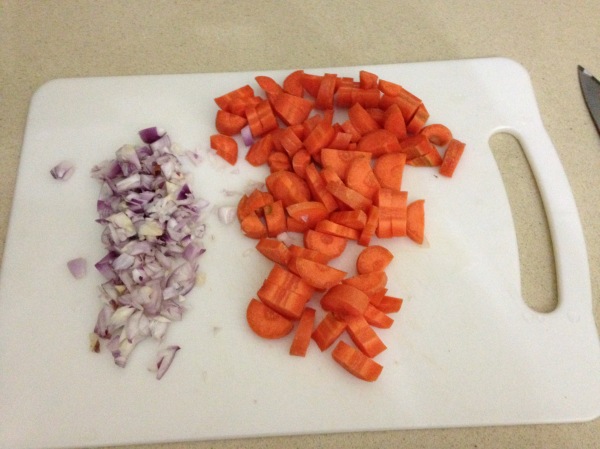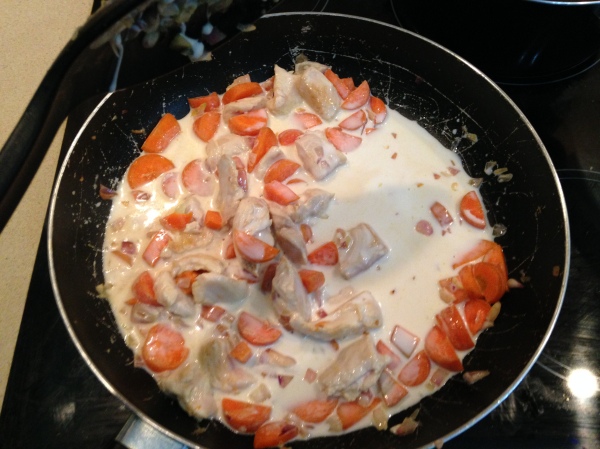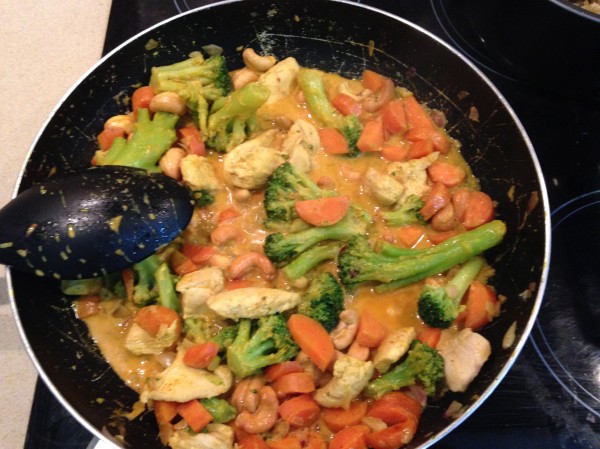As I mentioned briefly in a post at the end of last week, I went on a tiyul (trip) to Hebron with Pardes last Wednesday. Hebron is one of the most hotly contested locations in Israel. It has great significance religiously, and it has been the site of much violence and contention between Palestinians and settlers (or, “settlers,” depending whose narrative you are listening to).
Biblically, Hebron is where Abraham spent most of his life and where four important Biblical couples are buried: Adam and Eve, Abraham and Sarah, Isaac and Rebecca, and Jacob and Leah. All of these burials are believed to have taken place inside the same cave. The site today is not a cave but a large building over the cave, called the Tomb of the Patriarchs or Machpelah. In the Bible, Hebron comes under Israelite rule when Joshua enters the land of Canaan and the villages there are assigned to Caleb. Later, King David rules from Hebron for seven years.
The historical understanding is that Jews were exiled from the area after the destruction of the first temple, returned briefly, but were then exiled again when the area was under Byzantine (ie, Christian) rule. The return of the Jewish community was, ironically, following the Islamic invasion of the 7th century. At this point, Jews were allowed to return to Hebron and started to build a small Jewish community. While control over Hebron continued to be held either by Christian and Muslim forces over the next several centuries, Jews consistently maintained a small presence inside the city.
From the 12th century onwards, Muslims had authority in Hebron. While a Jewish community persisted in the land, no Jews were allowed within the Tomb of the Patriarchs during the entirety of this period. In 1917, the British occupied Hebron, but Jews continued to be barred from visiting the Tomb of the Patriarchs. In 1929, there was a violent massacre of Jews by Arabs that resulted in about 70 deaths and the destruction of Jewish homes and institutions. At this point, the Jewish community fled Hebron, marking the first time in about 1300 years that no Jews resided in Hebron.
Immediately following the creation of the state of Israel, Hebron was under Egyptian authority. After the six-day war in 1967, Israel gained control of Hebron along with the rest of the West Bank, marking the first return of the land to Jewish authority in 2,000 years and the first time that Jews would be allowed to enter the Tomb of the Patriarchs in over 700 years. At this point, some Israelis began to move back to the land (some of whom still felt a personal and/or family claim to the land from before the 1929 massacre). First, the Jewish community developed in Kiryat Arba, just on the outskirts of the city. In 1979, however, a group of settlers moved into the center of the city.
Today, Hebron is split into two sections, as determined by the Oslo accords: H1 and H2. H1 comprises 80% of the land of Hebron and is controlled by the Palestinian Authority. There is no Israeli military presence in these areas, and, under Israeli law, it is illegal for Israeli citizens to go to these areas. H2 is controlled by Israel. Within the 20% of Hebron that is considered H2, 15% is land monitored by the Israeli military but lived in by Palestinians. Ie, the army controls the roads in these areas but the homes and villages are Arab. The logic of this system is that it allows the military to control the roads to the Tomb of the Patriarchs, thereby insuring it will remain open to Jews. The remaining 5% of land is what is owned and lived in by Israelis. This area is heavily controlled by the military and restricted – and in some cases, forbidden – to Palestinians.
The recent situation in Hebron is, sadly, one that includes a lot of violence, persistent debate about who ‘owns’ the land or ‘should’ be there, and highlights the incredible impact narrative can have on a group’s understanding of and connection to place. With such different narratives of ownership and who has done injustice to whom, it is little wonder that the Jewish and Palestinian communities living side-by-side there have had little to agree on.
And now enough history, let’s get to the trip! We went to Hebron on an armored bus – as has been the practice of all visiting groups for many years:

To get to Hebron, we drove past Bethlehem along the ‘wall’ or ‘security fence’ (again, whose narrative?).
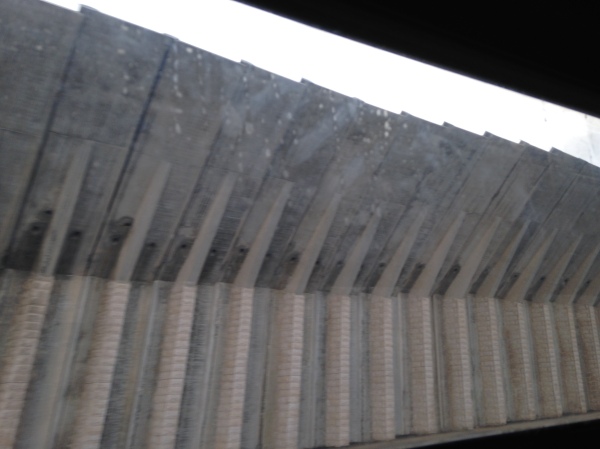
When we reached Hebron, we went to the city center to see the location where the first settlers came into the city proper in 1979. The original caravans are still in the same location and settlers continue to live in them (although today they have two caravans on top of each other and reinforcements built around the windows in response to a terrorist attack).

Near the city center, we climbed up a tower on Tel Rumeida for some great views looking out on the city:
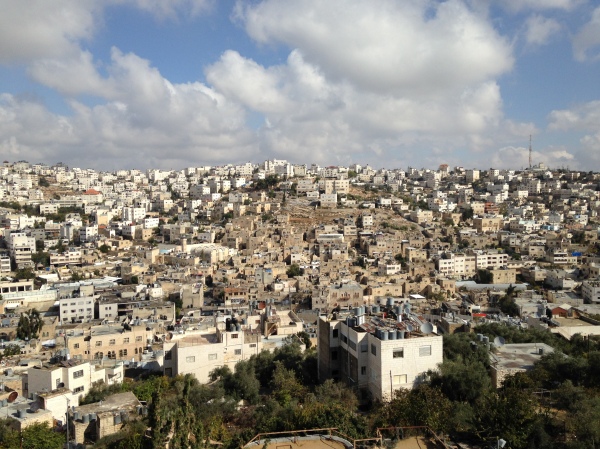
Looking down from the tower, we could see the Israeli military base that is located in Hebron:

The base is on Shuhada Street, a street that causes some of the greatest controversy in present-day Hebron. The street transitions from an Arab residential neighborhood to a Jewish one, and the street itself lies within H2 control. Following several terrorist attacks on the street, the street was closed to Palestinians. The Palestinian homes bordering the street had any openings to the street barred shut, and it is illegal for Palestinians to walk in this area.


We had the opportunity to speak with a soldier living and working on the base for about 20 minutes.
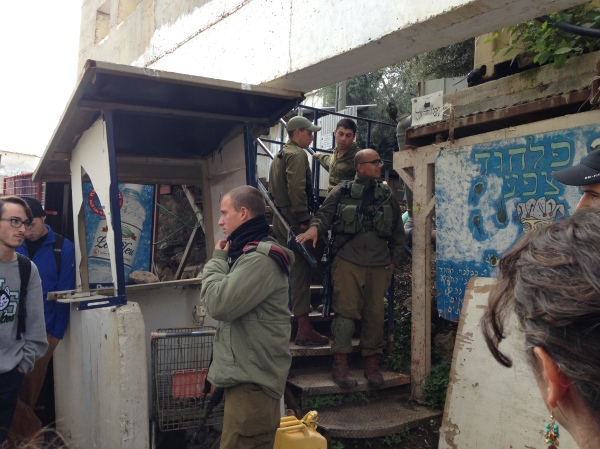
The soldier is 20-years-old, spent the summer in Gaza with Operation Protective Edge, and is now serving 6 months in Hebron before his unit is moved elsewhere. Someone in our group asked the soldier what he thought would happen if the military left Hebron. His response was to say something along the lines of, “In Gaza this summer, I saw that Gaza is not a city. It is a terrorist fort. If we left Hebron tomorrow, this would also be a terrorist fort.” Another interesting question was asked about the relationship between soldiers and Palestinian children. The soldier told us, “When they are younger, they come and talk to us and we have conversations. When they are 12, 13, or 14, then this is the age usually they throw rocks. Sometimes we ignore it, but if it is serious and we tell them to stop and they don’t, then we can detain them for up to three hours until the police come.”
After the conversation with the soldier, we went to the house of a youth organization called Youth Against Settlements. Immediately after entering the property of the group, there was a visible change in our surroundings:
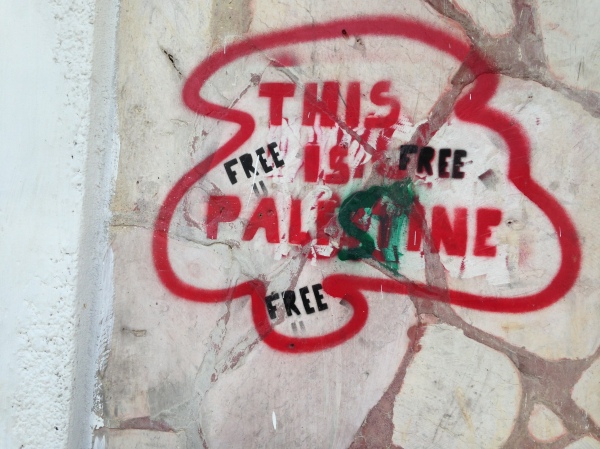

A female leader from the organization spoke with us. She shared many accounts of violence enacted by settlers towards Palestinians and spoke of most of these incidents as receiving little-to-no attention from police or the military. The organization uses non-violence to achieve its goals and commonly uses videos to garner support (she said that there are videocameras set up at all times around the house to record any possible violence from settlers).
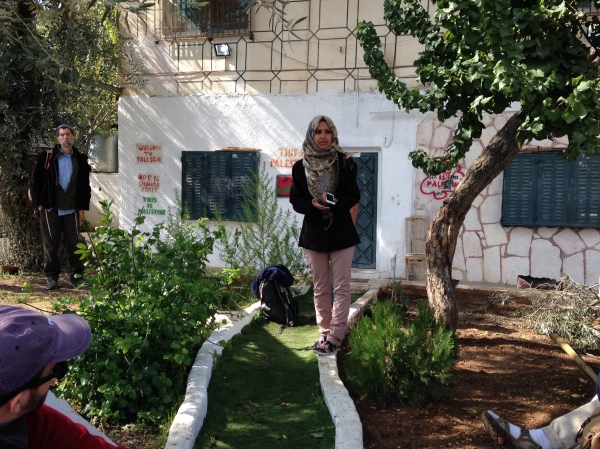


While the group does employ non-violence, many comments during the conversation (ex: Jews shouldn’t be allowed to pray on the temple mount, expressing an openness but not affiliation towards Hamas, assigning responsibility for change in full to Israelis) left me feeling as though the ultimate goals and methods of the group weren’t necessarily in line with mutual understanding, accountability, and change.
After the visit with Youth Against Settlements, we went to the center of the Jewish residential area. Again, the narrative visibly changed:


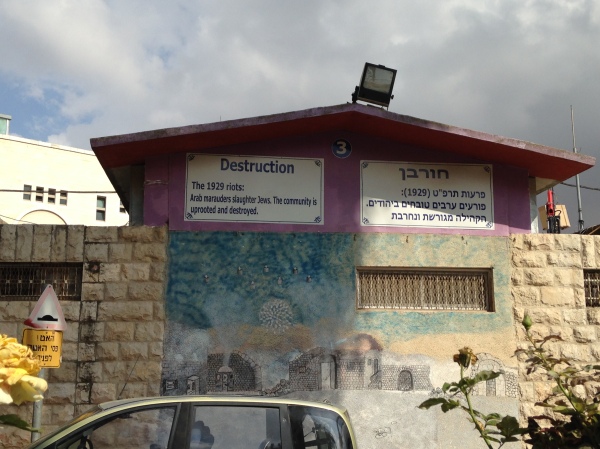
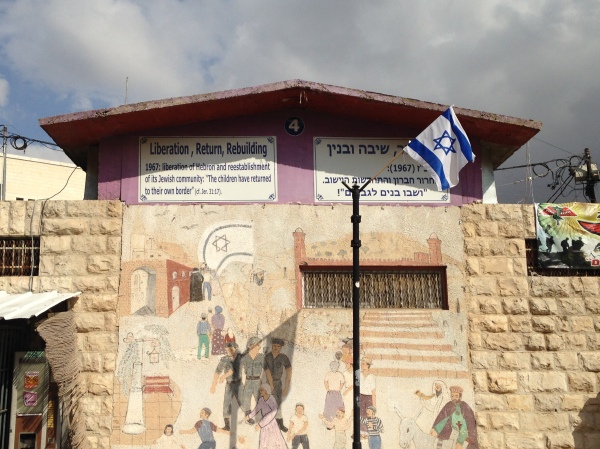

We went to one of the community’s synagogues – a building originally built in 1893 as a Jewish clinic:
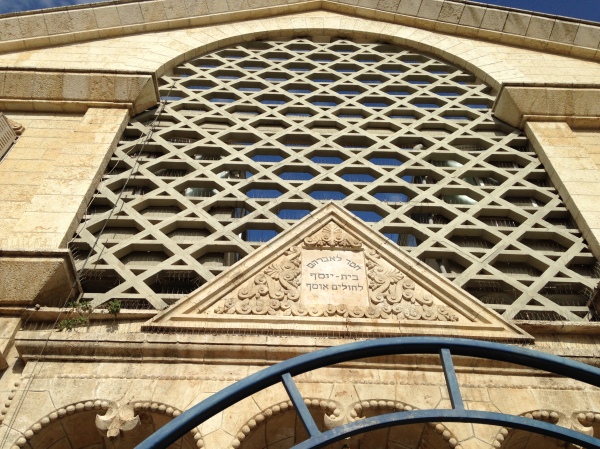
There, we met with David Wilder, the spokesman for the Hebron Jewish Community. Essentially, his job is to meet with (often hostile) media and visiting groups to represent the perspective of the Hebron Jewish Community.

Overall, David spoke about the Biblical and historical claim to the land by Jews, stated that a Jewish community in Hebron insures continued access to the Tomb of the Patriarchs, and cautioned against believing stories or videos at face value (stories can be untrue, videos can be misleadingly edited, etc.). While I expected David to speak in a way the inspired empathy for his positions, in reality, I found the way in which he spoke about Palestinians and expressed his opinions to often be disturbing and lacking in compassionate. In combination with the visit to Youth Against Settlements group, I left this session feeling as though each side was completely dismissing the narrative and perspective of the other as wholly illegitimate – a depressing outlook for the future indeed.
After this meeting, we walked through some more of the Jewish neighborhoods, passing by a memorial to a baby killed by a Palestinian sniper in 2001 during a period of heightened tensions:

Eventually, we made our way to the Tomb of the Patriarchs where we took a few moments to look around. The site is divided into two areas: one for Muslims and one for Jews. Visitors/tourists are allowed to visit either (but the security guards try to size you up when you come in to see which side you should go to. Ie, if you’re wearing a ‘Free Palestine’ shirt, they probably won’t send you to the Jewish side). Inside the site, there are 4 rooms – one for each couple – marking where the burial sites are believed to lie below.
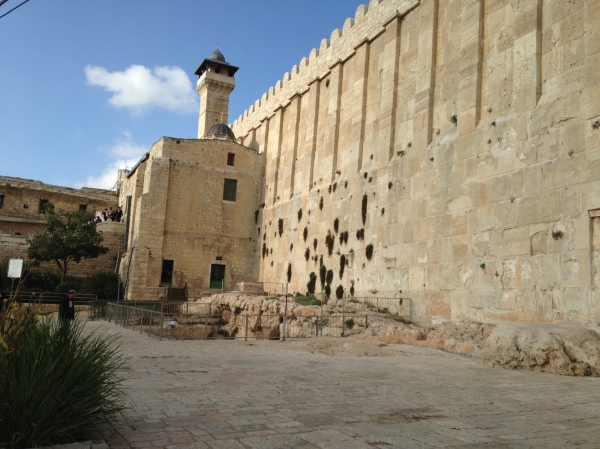


After visiting the Tomb of the Patriarchs, the group started to make our way back to Jerusalem with a quick stop in Gush Etzion (another area considered a settlement with a contentious history of ownership). In the Gush, we met with a group called Shorashim (roots). After an altogether VERY depressing day, this was the perfect end. Shorashim is a organization that embraces a life-style and ideology of non-violence (as opposed to simply using non-violence as a strategy to achieve an end goal). The group is run by a Israeli settler who lives in the Gush and a Palestinian man who formerly was an activist for Fatah. The two men both, through serious introspection, came to realizations of the humanity of the ‘other’ and started the group as an effort to increase dialogue and to help Israelis and Palestinians to realize that they DO have things in common – namely, roots in this land. They run their organization out of, essentially, a barn.

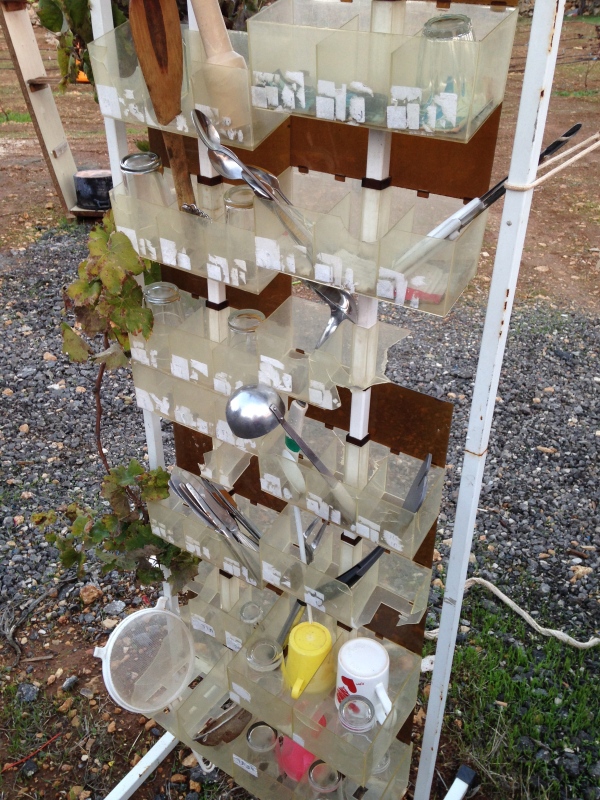
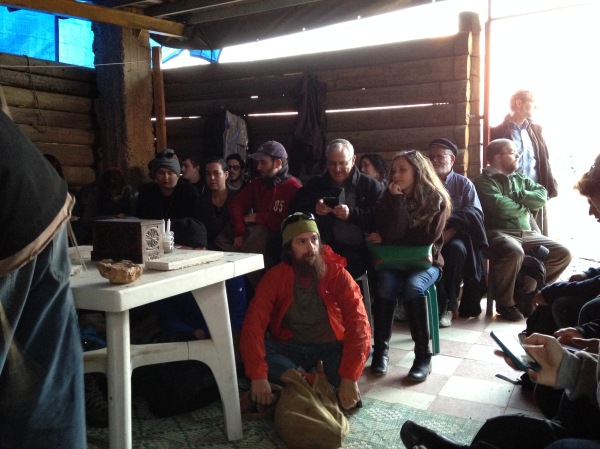
As we met with the group, the sun was going down, and we ended the session by candlelight:
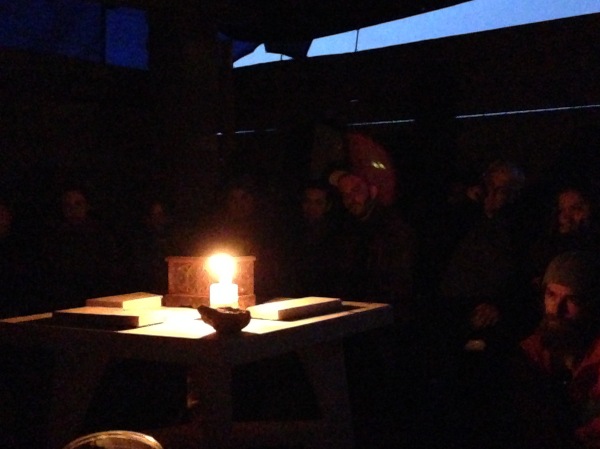
I was extremely moved by many of the things that Ali, the Palestinian leader of Shorashim, said to our group. He pointed out that, right now, Israel’s position is based mainly on fear, and the Palestinian position is formed largely from anger. He said that “we must facilitate meetings and interactions with the other to reduce fear. We must end this competition for who has suffered more. Non-violence is creating joint interests for both sides.”
I was so appreciative to end the day with a little sliver of optimism, and I truly hope that groups like Shorashim are able to reach individuals from both ‘sides,’ building compassion, understanding, peace.


